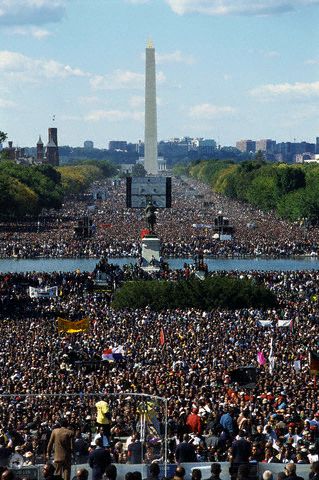
(Train yards west of Philadelphia's 30th Street Station)
For decades, while Wall Street and real estate portfolios ballooned with profits from nothing, working-class communities and the massive public works projects of the early 20th century have been systemically starved to the brink of collapse. DC saw its homicide rate climb 2.2% to 185 in 2008. Even though Baltimore and Philadelphia saw double-digit percentage drops in homicides this year, to over 200 and 300 respectively, murder rates in those cities remained several times higher than the national average. Wilmington set a city record of 24 homicides for 2008. Institutionalized poverty, failing public schools, a now decades-old drug epidemic, rampant divorce, AIDS, failing or non-existent community organizations, unemployment, underemployment, government corruption, and societal and governmental neglect all contribute to these appalling statistics.

(Philadelphia's 30th Street Station)
Perhaps nothing could be a better symbol for the decline of these four American cities than Philadelphia’s 30th Street Station. Built in 1933, Philadelphia’s rail hub is a wonder of public infrastructure resembling an Egyptian temple. Then state-of-the-art steel beams enabled the building’s architects to fill the exterior walls of the post and lintel structure with windows, flooding the enormous central hall of the station with natural light. The arched roofs of the station’s trolley platforms are made of an interlaced webbing of steel girders. It is precisely the kind of building one would never expect government contractors to be able or willing to build, yet it was built four years into the Great Depression.

(The "Drexel Shaft" on the west side of the 30th Street Station)
Straddling the west bank of the Schuylkill River, the 30th Street Station sits in the heart of a sprawling industrial complex that at its heyday was a feat of American engineering. Now blighted with rust, its web of rusting tracks and bridges encircle the defunct “Drexel Shaft” – an enormous smokestack looming over the University City neighborhood – which once provided power and heating to the 30th Street Station and its outbuildings. The massive quantity of steel girders, rails and rivets, the esthetic care of the station’s architects, and the political will to push through the financing of such a costly public good during a time of economic ruin speak to the surplus of cultural wealth available in the midst of this country’s worst economic era. That that richness was left to spoil by an oligarchy of conmen and profiteers speaks to moral bankruptcy in desperate need of a bailout.

